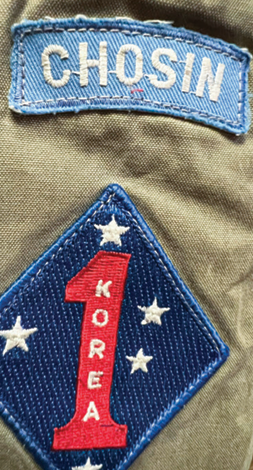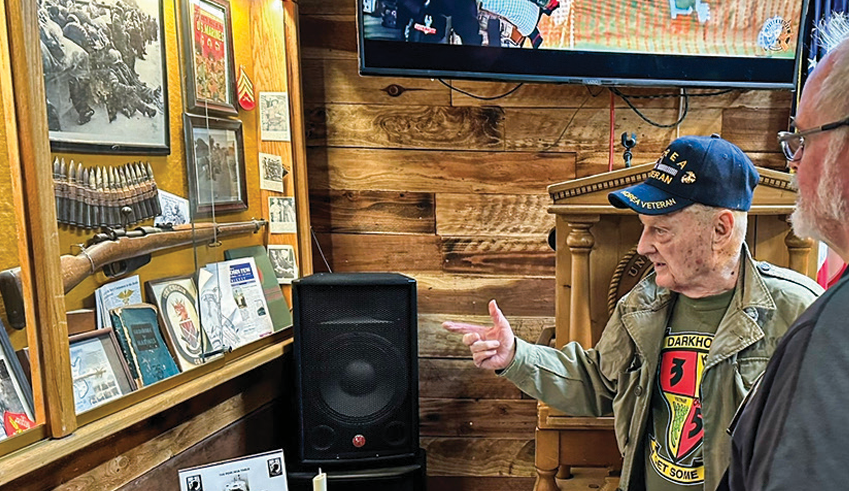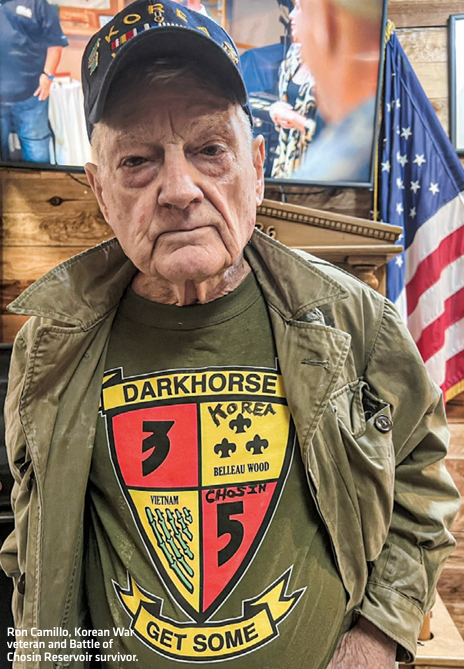Story and Photos by Paul Pawela
Thank you for reading this post, don't forget to follow and signup for notifications!

In the heart of Las Vegas sits a historic site called the Leatherneck Club. It is a bar and grill that also serves as a Marine
Corps history museum. I frequent this site every year when I attend SHOT Show. A few years ago while visiting the
Leatherneck Club, I had the honor to meet Mr. Ron Camillo, a marine veteran and survivor of the very famous Battle
of Chosin Reservoir. In fact, Camillo is the hero who donated all the artifacts from this Korean War battle that are on display at the club. It was such a high honor to meet this great hero who participated in one of the most brutal fights Americans have ever been in.
FOR THOSE WHO have never heard of the Battle of Chosin Reservoir, here is the story. In the brutal winter of 1950, amidst the frozen mountains of North Korea, a legendary chapter in military history was written. The Battle of Chosin Reservoir (November 27-December 13, 1950) remains one of the most harrowing and heroic battles ever fought by United States and United Nations forces. Facing overwhelming odds, subzero temperatures and an encircling enemy, the battle became a testament to resilience, strategy and sheer human endurance.
Following the successful Inchon Landing in September 1950, UN forces under General Douglas MacArthur had pushed North Korean troops back past the 38th parallel. Victory seemed close. American and UN forces advanced toward the Yalu River, the border with China, hoping to end the war by Christmas. But China had other plans. In late November, hundreds of thousands of Chinese People’s Volunteer Army, or PVA, troops crossed into North Korea under cover of night and mountainous terrain. UN forces, stretched thin and unaware of the Chinese buildup, were caught off guard.


The US 1st Marine Division, along with attached US Army and British forces, advanced into the rugged highlands around the Chosin Reservoir, a remote and frozen region in northeast North Korea. Temperatures plunged to -30 degrees Fahrenheit, with howling winds and icy terrain. Equipment malfunctioned, weapons jammed and frostbite became a greater enemy than bullets. On November 27, 1950, the Chinese launched a massive assault. Over 120,000 PVA troops surrounded approximately 30,000 UN forces near the reservoir. What followed was two weeks of relentless combat, described by survivors as a living nightmare. Despite being encircled and outnumbered four to one, the marines and their allies refused to surrender. Fighting through wave after wave of night attacks, ambushes and mountainous terrain, they executed a fighting withdrawal – a tactical masterpiece that allowed most of the force to escape destruction.
Air support from the US Air Force and Navy proved vital, dropping supplies and providing close air support in white-out conditions. The marines’ use of “box formation” defenses, combined with their discipline and cohesion, allowed them to break out and make a brutal 78-mile march to the port of Hungnam for evacuation. More than 17,000 casualties were sustained by UN forces; an estimated 7,500 were killed, wounded or missing in action, while approximately 8,000 died of frostbite. Chinese losses are estimated to be upwards of 60,000, many due to exposure and logistical failures.
THE SURVIVORS CAME to be known as “The Chosin Few,” and their story became a symbol of courage under fire. The battle reshaped US military doctrine on winter warfare, evacuation strategy and intelligence on Chinese military capabilities. With the tactical withdrawal, the resilience and effectiveness of UN forces at Chosin helped save tens of thousands of lives and preserved a fighting force that would continue defending South Korea for years to come. Today, the Chosin Reservoir remains a remote place, but in the hearts of marines and military historians, it stands as sacred ground. The bravery shown in that icy cauldron reminds us that sometimes heroism is not in winning, but in enduring. The Battle of Chosin Reservoir was not just a fight for ground; it was a fight for survival, comradeship and honor. ★
Editor’s note: American Shooting Journal honors Mr. Ron Camillo and all his fellow marines who were in the battle.
Special thanks to “Ghost,” owner and operator of the Leatherneck Club.



